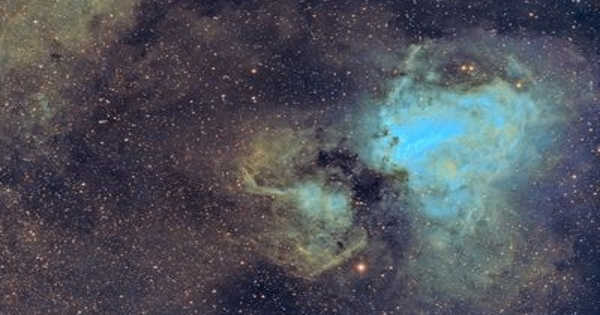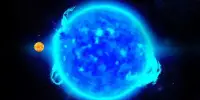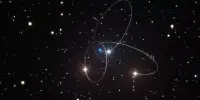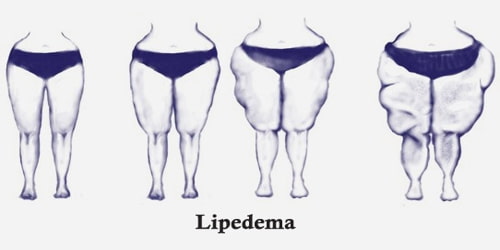HD 168607, also known as V4029 Sagittarii, is a blue hypergiant and luminous blue variable (LBV) star visible through amateur telescopes in the constellation Sagittarius. It can be seen to the south-east of M17, the Omega Nebula, along with HD 168625, a blue hypergiant and possibly luminous blue variable.
HD 168607’s long-term light- and color behavior suggests the presence of a very slowly developing S Dor phase – that is, a bright phase that coincides with redder colors.
Luminous blue variables exhibit luminosity variations over time scales ranging from days to decades. LBVs with the S Dor phase are fast rotators with velocities reaching the critical regime in their minimum phase, and theoretical models suggest that they may have strong polar winds. Their surrounding nebulae, such as the Homunculus nebula, are frequently axisymmetric, arguing that a single-star model cannot reproduce these bipolar nebulae.
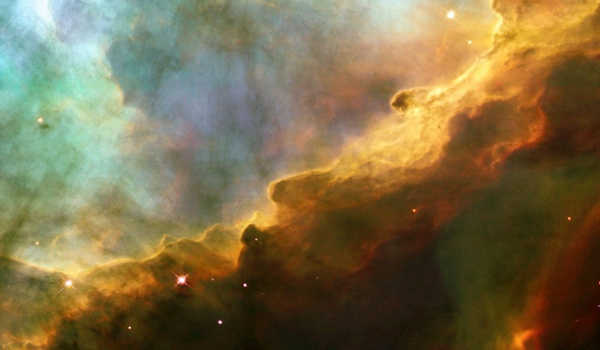
Physical properties
HD 168607 is estimated to be about as far away from the Sun as the Omega Nebula (2.2 kiloparsecs, or 7,200 light-years), and no measurements have been found that rule out a physical association with HD 168625. Assuming this distance is correct, this star has a surface temperature of 9,300 K and is 240,000 times brighter than the Sun. The parallax of 0.64380.0603 mas in Gaia Data Release 2 implies a closer distance of about 1,500 pc.
When it was first identified as a Cygni variable, the apparent magnitude of this star or star system varied by 0.25 to 0.30 magnitudes over a period of 64 days. In contrast to its neighbor HD 168625, no nebula has been discovered around this star. It is classified as a luminous blue variable or S Doradus variable in the General Catalogue of Variable Stars, with the variable star designation V4029 Sagittarii and maximum and minimum visual magnitudes of 8.12 and 8.29, respectively. Despite the fact that it is suspected to be in or about to enter an S Doradus phase, no outbursts have been observed. A magnitude variation ranging from 8.05 to 8.41 has been reported from a broader set of observations.
HD 168607 is thought to have had a mass of 25 to 30 M when it first formed on the main sequence, but it now has a much lower mass. Based on its period and photospheric abundances, it appears to have passed through a red supergiant stage and has now expelled its outer atmosphere and increased its temperature.
